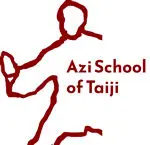Qi Gong

What is Qi Gong?
Qi gong is frequently described in terms of a set of movements or exercises to be performed. In reality it is far simpler than that and yet at the same time much more complicated.
Qi Gong (pronounced chee gung and sometimes written as qigong or chi gong) can be literally translated as “breath work” - it is an integral part of taiji. There are as many different styles of qi gong as there are misunderstandings on the subject.
For taiji, qi gong is internal (lei/nei gong) and different styles of internal martial arts may share similarities in the preliminary stages but, despite the fundamental principle being the same, they begin to differ as you progress.
So, what are the basics of qi gong?
Breath, blood and bone
Blood (Yin) gives birth to Qi (Yang)
Qi (Yang) moves Blood (Yin).
Qi moves the blood, and the blood moves around the body like a messenger between the body’s essential organs, cleaning and invigorating as it goes. This in turn improves organ function, which in turn cleans and enriches the blood, reinforces the bone marrow and subsequently bone density. A continuous loop improving, repairing and sustaining.
How do we go about developing our qi gong?
Think of how a baby, even one that is newly born, can grip an adult finger with enough strength for their whole body to be lifted. A baby has no muscle development, so how is that possible?
When a baby is first born, their back is straight and they breathe using their full lungs. Their lower abdomen is relaxed and the body flexible, lacking tension or resistance and still able to grip tightly.
To be effective in qi gong, one has to ‘set up’ the body to resemble this as much as possible.
- Open your joints which will allow the opening of your meridians
- Posture – correct skeletal alignment
- Develop a long, slow and soft breath from the lower abdomen (dan tien)
As one progresses these deepen. Of course everyone starts with different levels of ability - the important thing is to start. Whatever level, start from there. People advance at different paces, sometimes slowly, sometimes more quickly, so try not to compare with someone else, your body will determine the speed of progress that is required.
As you improve you may start to discover a variety of benefits - a calmer, clearer mind, a sense of increased vitality and balance both physically and mentally. Qi gong requires patience, a calm determination, and above all steady, regular, diligent practice - there are no shortcuts. With time the benefits can undoubtedly be worth it.
This is the foundation method of the development of your qi gong, known as Zhan Zhuang (Standing Stake 站桩). Here at Azi School of Taiji, you are shown the basics with a little warning from Master Yazi Liu: if your posture and positioning is not correct, you can stand there for all the time in the world but you will not gain any benefits. However if your posture and positioning is correct, then even if you practice for a few minutes, this will be highly beneficial to your body.
To progress more rapidly, when you do the Tao Lu (form) you are actually practising qi gong as you move and breathe.
